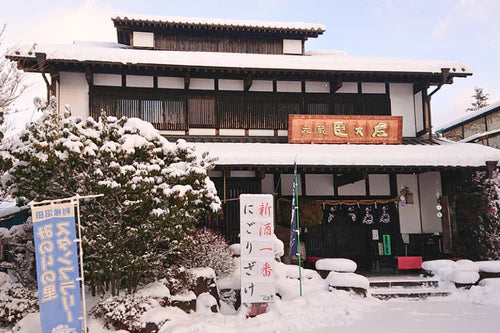Traditional Japanese weddings are rich with meaningful rituals, and one of the most symbolic is the Three-Three-Nine Ceremony (Sansankudo). This ritual is a key component of the traditional Japanese wedding, known as the Shinzen Shiki.
In this article, we will delve deep into the significance of the Three-Three-Nine Ceremony, exploring its history and its deep connection to Japanese sake.
What is the Three-Three-Nine Ceremony?
Steps of the Three-Three-Nine Ceremony

In the Three-Three-Nine Ceremony, the bride and groom exchange sacred sake nine times using three differently sized cups. This act symbolizes the union of the couple and the beginning of their life together.
Here are the detailed steps;
|
Preparing the Cups |
Three cups of different sizes are prepared, typically small, medium, and large.
Each cup holds symbolic meanings: the small cup represents gratitude to their ancestors, the medium cup symbolizes their vows to each other, and the large cup represents the prosperity of descendants and the peace of both families. |
|
Pouring the Sake |
A priestess presents a cup to either the groom or the bride. The priestess pours the sake into the cup three times, but only the third pour is actual sake. The first two times, she only pretends to pour, tilting the sake bottle without actually pouring any liquid. |
|
Drinking the Sake |
The couple takes turns drinking from the cup three times.
There are two ways to drink the sake: -Sipping three times: The couple takes small sips three times. -Drinking it all at once on the third sip: The couple takes a small sip twice and then drinks the rest in the third sip. |
|
Passing the Cups |
The traditional order of passing the cups is as follows: First cup (small): groom -> bride -> groom Second cup (medium): bride -> groom -> bride Third cup (large): groom -> bride -> groom
However, a simplified version is often used nowadays: First cup (small): groom -> bride Second cup (medium): bride -> groom Third cup (large): groom -> bride |
You might find it helpful to watch a video of the Three-Three-Nine Ceremony. Here's one for your reference. The ritual starts around the 6:40 mark and lasts for about a minute.

Origins and History of the Three-Three-Nine Ceremony
The Three-Three-Nine Ceremony traces its origins back to the Heian period (794-1185).
Originally a pre-battle ritual among samurai during the Muromachi period (1336-1573), it later spread to the common people during the Edo period (1603-1868).
As a wedding ritual, it was formalized during the Muromachi period by the Ise and Ogasawara schools of martial arts etiquette.
The ceremony gained widespread recognition after the wedding of Emperor Taisho at Hibaya Grand Shrine in 1900. In the wedding ceremony, it is formally called "Sankon no Gi."
Sake and Japanese Weddings
The Role of Sake in Japanese Weddings

In a traditional Japanese wedding, particularly in a Shinto ceremony, sake plays a special role. Similar to how the exchange of rings symbolizes a couple's bond and the beginning of a new life in a Christian wedding, the Three-Three-Nine Ceremony ritual in a Shinto wedding uses a special sake called "Omiki."
Omiki is a sacred sake offered to the gods, believed to be imbued with divine power, and is essential for important life events like weddings.
Drinking Omiki is thought to strengthen the couple's connection with the gods, symbolizing that their marriage is a sacred vow blessed by divine forces.
It also represents the purification of their hearts as they embark on a new life together. By sharing Omiki from the same cup, the bride and groom deepen their bond, reaffirming their commitment to walk through life together and ensuring a strong and lasting marriage.
A Special Sake for the Three-Three-Nine Ceremony: Omiki
Omiki is a type of sake believed to acquire divine power after being offered to the gods in a Shinto ritual. While sake sold specifically for offerings is also called omiki, it's important to note that before the offering, the sake is not considered to possess spiritual power.
In Japan, there's a long-standing tradition of offering food and drink to the gods, known as Shinzen. This ritual typically involves offerings of rice, fish, vegetables, salt, and water, with sake being an essential component. As an agricultural society, rice and sake hold significant importance in Japanese culture.
After a Shinto ritual, there's a ceremony called Naorai where participants partake in the food and drink offered to the gods. This is believed to share in the divine power and invite blessings. Today, drinking omiki is a common practice during naorai.
Interestingly, the same kanji characters, "御神酒," can be read as both "goshinshu" when referring to sake offered to the gods and "omiki" when referring to the sake served during a ritual.
A Toast to Love: The Significance of Sake in Japanese Weddings

Sake, the heart and soul of Japanese cuisine, plays a profound role in traditional Japanese weddings.
The Three-Three-Nine Ceremony, where the bride and groom exchange three cups of sake nine times, is a time-honored ritual symbolizing their eternal bond and the deepening of family ties. This ancient tradition, stretching back centuries, offers a glimpse into the beauty and depth of Japanese culture.
If you're interested in experiencing Japanese culture, we invite you to try our premium sake, 'KAMIHOTOKE'.
Crafted using a 500-year-old brewing technique preserved at the historic Kofuku-ji temple and the finest yeast from the birthplace of sake, Omiwa Shrine, this sake is a true masterpiece.
It embodies the spirit of omiki, the sacred sake offered to the gods in traditional Japanese weddings. By savoring this sake, deeply rooted in Shinto and Buddhist traditions, you can embark on a journey of cultural discovery.
Discover the elegance and tradition of Japan with every sip of 'KAMIHOTOKE'. Click here to learn more.





